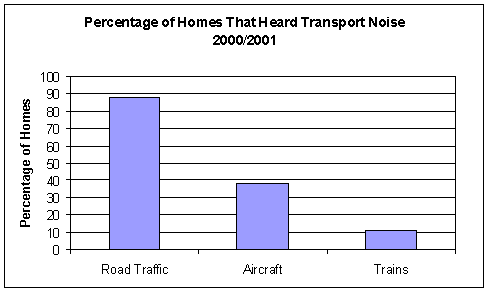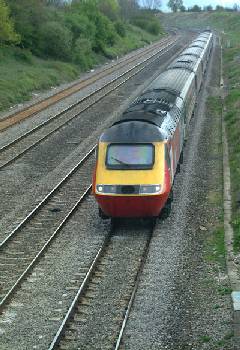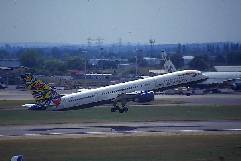Vehicle Noise
Environmental noise can be
described as any unwanted sound. Noise from industry, traffic, homes and
recreation can cause annoyance, disturb sleep and affect health. Over half of the homes in
England and Wales are thought to be exposed to noise levels exceeding the World
Health Organization’s recommended daytime level of 55 decibels. The
number of people who reported hearing noise from their homes has increased
significantly in the last decade. The bar chart below shows which forms of
transport produced the noise that people could hear in 2000/2001.

When EC legislation
was first set in the 1970s, noisy exhaust systems and power units being used in
relatively low-density traffic were the main cause of urban traffic noise.
Today, as traffic density has increased and other noise sources have been
quietened, the noise problem is being dominated by the tyre-road interaction.
Tyre
noise is especially noticeable from cars at speeds above 30mph. Research
has shown that tyres have widened, on average, 2mm per year.
Car tyre noise levels increase by .2 to .4dB for each 10mm that the car
tyre is widened. Research into tyre compounds and road surfaces will help
find ways to reduce tyre noise. Drivers can do their bit by ensuring their
tyres are properly inflated by checking their tyre pressures at least once a
fortnight. Regularly checking tyre pressures would also reduce wear and
reduce fuel bills therefore helping the environment.
For private
passenger vehicles (like family cars), the pass-by noise limit today is 74dB(A).
This is a big drop from the 82dB(A) limit set for equivalent vehicles in 1970;
each drop of 3dB(A) is equivalent to halving the noise intensity. These
reductions have had an large impact; by 1996 a heavy truck make the same amount
of noise as a car did in 1972, and it took about 10 cars to produce a similar
level of noise as one did in 1972.
There are no specific limits on
noise from roads, but noise levels may be taken into account when planning to
build houses or offices near to roads. Noise barriers or noise insulation (e.g.
acoustic double glazing, alternative means of ventilation) may be used to reduce
the impact. If
noise from new roads exceeds certain limits at existing houses the householders
may be eligible for noise insulation grants through the local highway authority.




